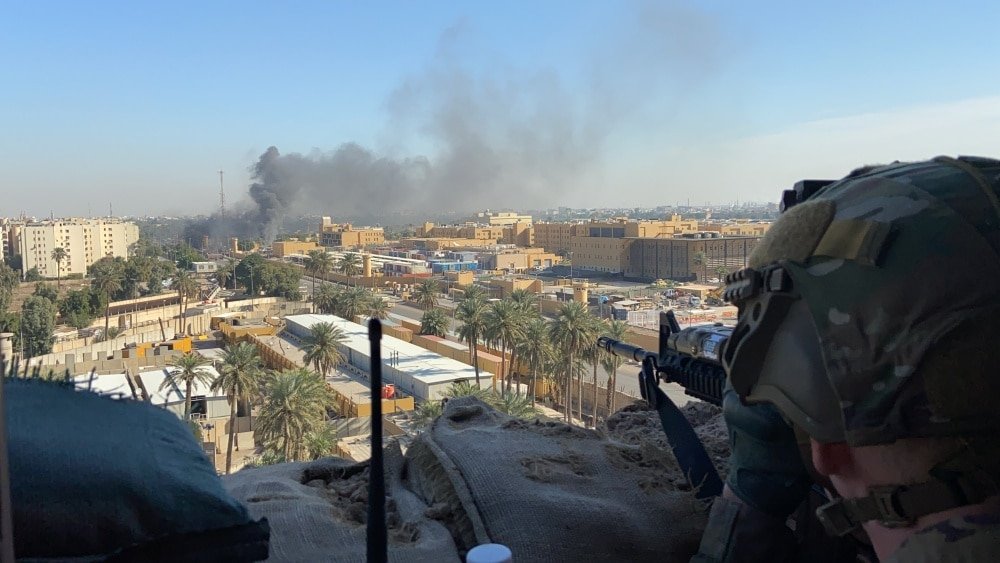recent developments, the Middle East has witnessed an alarming surge in violence, with more than 100 attacks reported since mid-October. The latest incidents, particularly intense in the northern Kurdish region, have disrupted the previously considered safer areas. These attacks are believed to be continuations of terroristic behaviors, raising concerns about the security situation in the region.
Breaking News Today: U.S. Retaliates Against Iran Proxy Attacks
The United States has responded to this wave of attacks with overnight retaliatory strikes on Hezbollah targets in Iraq. This comes after a prolonged series of more than 100 attacks on U.S. troops in the region. The retaliatory actions mark a significant shift in the U.S. approach to the escalating violence in the Middle East.
Expert Analysis: Is the Response Strong Enough?
To gain deeper insights into the situation, we turn to Michael L, Managing Director of Beacon Global Strategies and a former National Security Council member under President George W. Bush. Michael L expresses satisfaction that the U.S. has finally taken action but suggests that the response should have come earlier in the cycle. He emphasizes the need for a more proactive stance to prevent injuries to U.S. troops, challenging the current “Red Line” approach that triggers action only after U.S. personnel are harmed.
The interview sheds light on the persistent nature of the attacks, with at least 103 incidents reported since October. In the latest attack, three service members were injured, one critically. Michael L questions President Biden’s cautious approach, stating that the Iranians seem to have not learned from the U.S., as retaliatory actions appear weak and infrequent.

National Security Challenges and Biden’s Response
Michael L criticizes President Biden’s tendency to be overly concerned about escalating conflicts with Iran. Despite acknowledging that the economy is improving, the perception among the American people is crucial. Moore suggests that when Biden touts positive economic indicators, it creates a perception that he is out of touch with the financial struggles faced by Main Street America. The disconnect between the administration’s messaging and the economic reality experienced by ordinary Americans contributes to a sense of pessimism.
pointing out that the economy is a top issue for voters. However, if the positive changes are not perceived by the electorate in a timely manner, it could pose a challenge for President Biden’s reelection bid. Moore agrees, noting that despite the overall improvement in the job market and the decrease in inflation, the middle and working-class families, in particular, are not feeling the positive impact of these changes.
Factors Contributing to Economic Pessimism
Moore identifies two major factors contributing to the prevailing pessimism among Americans. First, there is a significant issue with personal debt, with credit card debt alone exceeding $1.1 trillion. Americans are increasingly relying on credit, causing their debt to rise steadily each month. The second factor is the staggering national debt, which has surged to $33 trillion under President Biden. In just three years, Biden has increased the national debt by a staggering $6 trillion, raising concerns about the long-term economic stability of the country.
Highlighting data from a New York Times-Siena poll, it is revealed that over 60% of Americans in battleground states do not have a favorable view of the economy. This further underscores the challenges President Biden faces in garnering widespread support if the economic concerns persist.
Conclusion: A Critical Economic Crossroads
In conclusion, the latest news and analysis suggest that the United States is at a critical economic crossroads. Despite positive indicators such as a strong job market and a decreasing inflation rate, the disconnect between the administration’s messaging and the lived experiences of everyday Americans creates a challenging environment. The burdens of personal and national debt, coupled with the persistent struggles of the middle and working class, contribute to a prevailing sense of economic pessimism.
As the nation moves closer to the upcoming elections, President Biden and his team face the daunting task of addressing these economic challenges and effectively communicating their efforts to the American people. The outcome of this economic reality check could play a decisive role in shaping the political landscape in the months to come.
